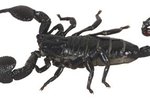
Freshwater clams, or mollusks, have a very unique way of reproducing. Freshwater clams can be miles away from their mate at the time of fertilization. All clams set their eggs and sperm free in the water, but freshwater clams depend on the current to successfully create new life.
Fertilization
A male clam releases his sperm upstream. The current moves his sperm downstream, until it’s drawn into a female clam’s incurrent siphon and used to fertilize hundreds, sometimes thousands, of eggs.
Glochidia
Inside the female clam’s gills, the fertilized eggs develop into glochidia, or larvae capable of attaching themselves to fish’s gills. Once the glochidia are fully formed, the female clam releases them into the water through her exhalent siphon. From there, the glochidia attach themselves to a fish, where they live as a parasite until they’re fully formed.
Life on the Bottom
Once the freshwater mussel is fully formed, he detaches from the fish and drops to the lake or river’s bottom. He begins to grow his armor, or shell. If he’s lucky, he will live a full life. Depending on the species of freshwater clam, this lifespan could be anywhere from 20 to 100 years.
References
Photo Credits
-
Stockbyte/Stockbyte/Getty Images
Writer Bio
Caryn Anderson combines extensive behind-the-scenes writing experience with her passion for all things food, fashion, garden and travel. Bitten by the travel bug at the age of 15 after a trip to Europe, Anderson fostered her love of style and fashion while living in New York City and earning her degree at New York University.




